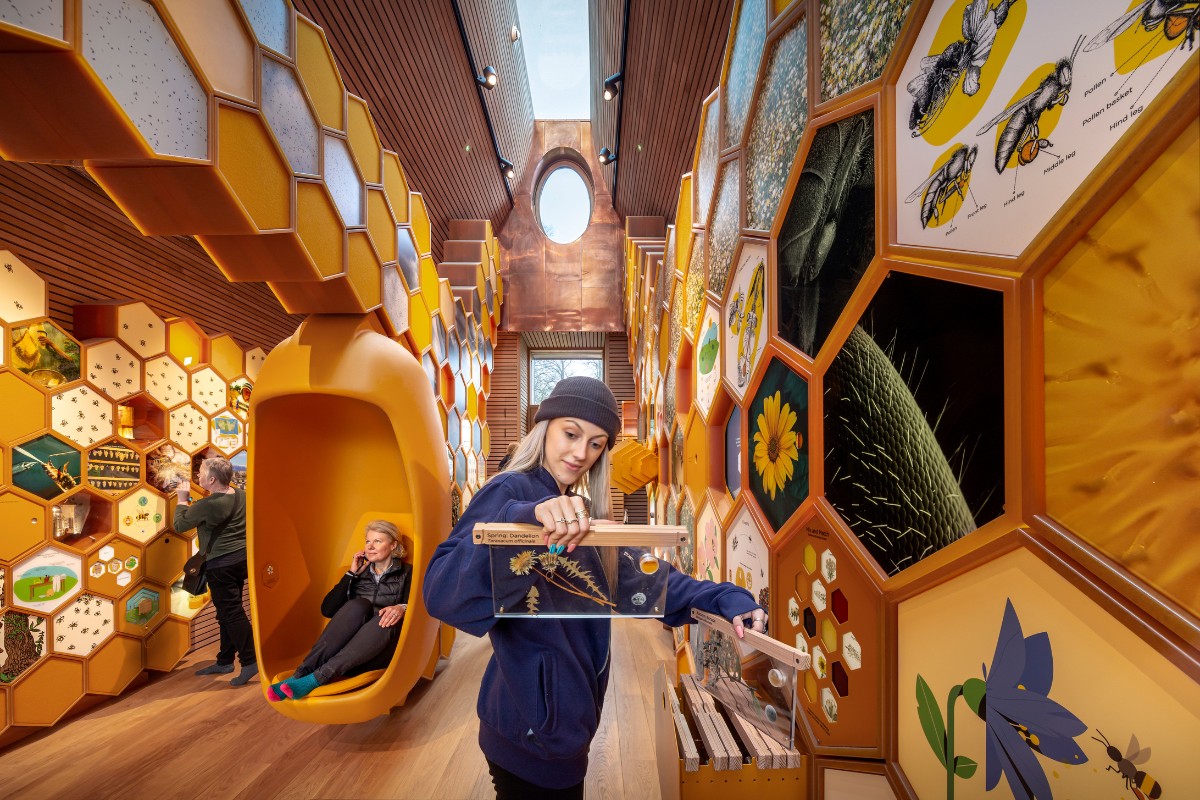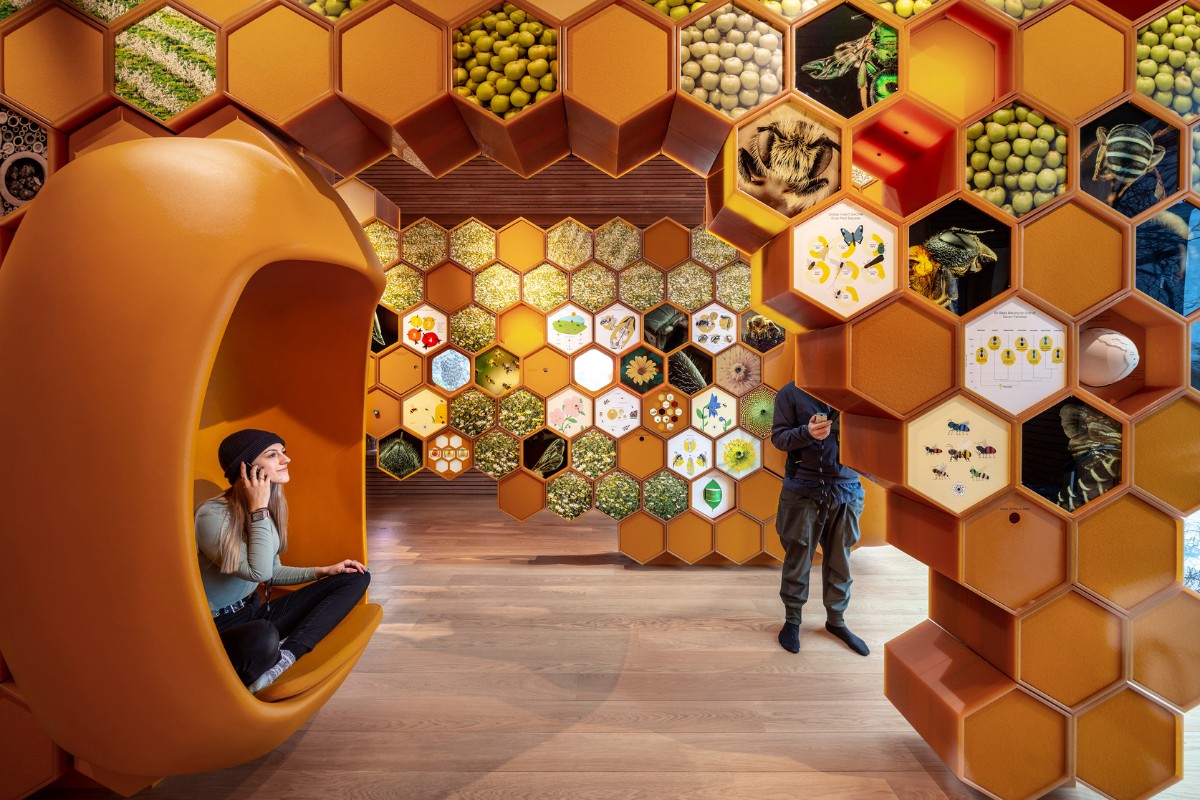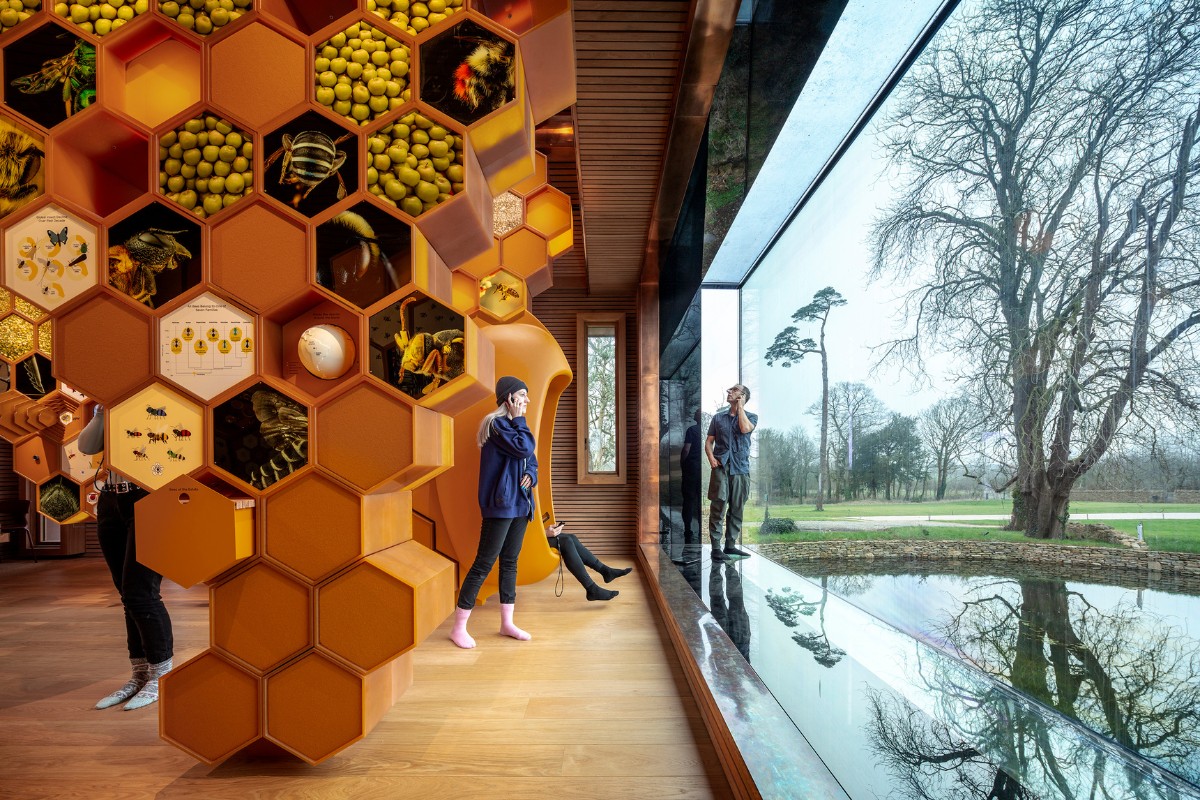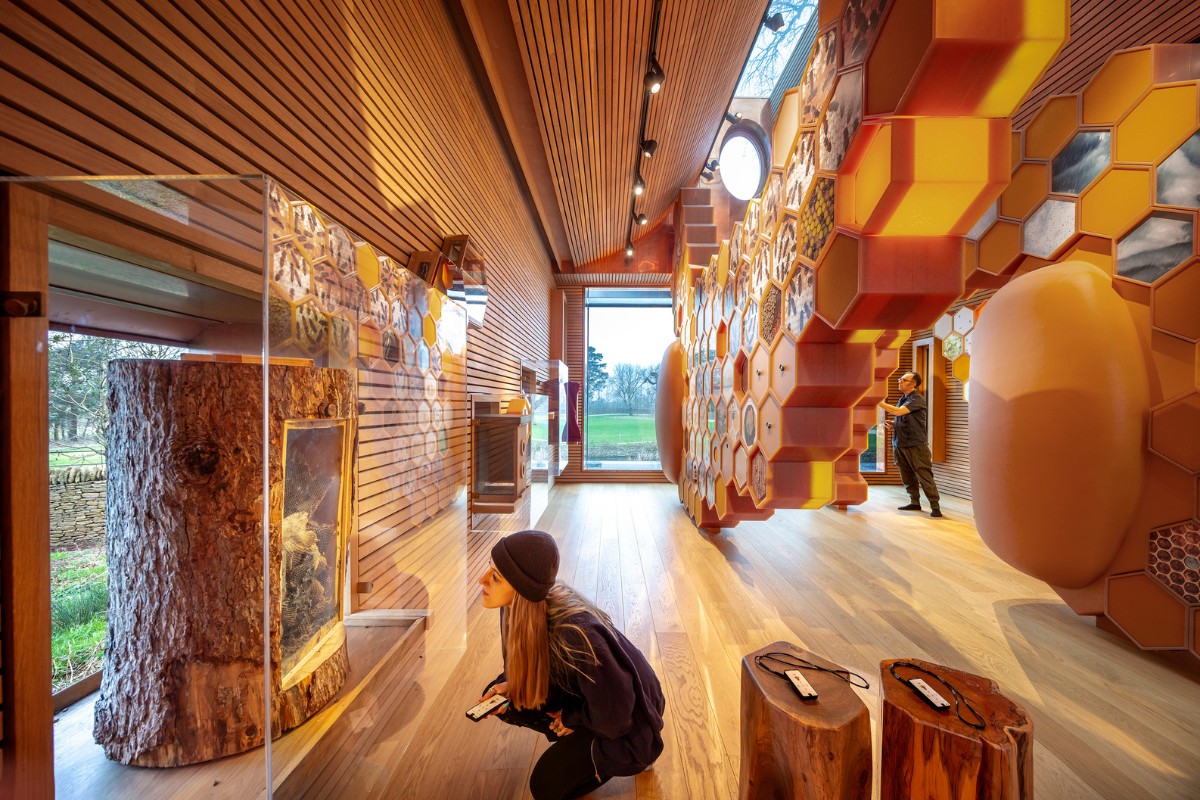 13th April 2023 | IN INTERVIEWS | BY SBID
13th April 2023 | IN INTERVIEWS | BY SBIDIn this week’s interview with 2022 SBID Awards winners of the Public Space category, Kossmanndejong, Pauline Fer explains the concept of the design, how they displayed the information in an accessible way, and developed custom-made solutions to fit the project’s narrative.
At Beezantium, integrated architecture and scenography transform what initially appears as a small, wooden building on the outside into a thriving beehive on the inside.
SBID Awards Category: Public Space
Practice: Kossmanndejong
Entry: Beezantium

Firstly, tell us a bit about the design of your project. What were the key ideas, concepts and processes behind it?
Our scenography transports visitors into a thriving beehive by surrounding them with giant honeycombs made of a material mimicking wax.
The information in each of the honeycomb’s hexagonal cells contributes to the larger story. The narrative begins with a close focus on the bees. Visitors can watch living colonies in the observation hives, witnessing how these superorganisms organise themselves. With each honeycomb layer, the narrative’s perspective slowly broadens. We see the bees interact with their surroundings and discover how human actions affect bees. Gradually, visitors become aware that everything in our ecosystem is connected and that bees play a vital role in it.
To share this information in an accessible and intuitive way, we minimised text and worked with a multisensory combination of images, infographics, interactives, animations and audio. Each cell contains a piece of information waiting to be harvested by visitors. For example, visitors feel the warm temperature at which bees regulate their hives, learn about the tools used to artificially inseminate the queen bee, and consider a drop of honey that represents how much a bee produces during its entire lifetime (1/12 teaspoon). And in the audio guide, the estate’s beekeeper Paula Carnell shares her fascination with bees.

What was your biggest takeaway or highlight from completing this project?
We started working on the project with the expectation that we would create an exhibition about bees. But we ultimately developed a story about how everything in our ecosystem is connected. It was fascinating to dive into the world of bees and discover how much we depend on them.

What has winning an SBID Award meant for you and your business?
We strive to create impactful experiences that inspire and move visitors. We are honoured that our design resonated with and left a lasting impression on industry leaders and the public.

How was the process of arranging the display in a quite small and open space? Did you encounter any difficulties?
Our client wanted a space suitable for exploration and contemplation. The 50 m2 space was the perfect size to create a human-size hive. And we embedded a lot of information in the honeycomb’s hexagonal cells without overwhelming the space. These cells function like mini exhibits, partly hidden behind doors, peek holes and in drawers. They invite visitors to actively explore the content and draw them into the bees’ world.
Given the observational hives on display, we developed a low-tech exhibition. Bees communicate and navigate using vibration, so we limited our use of technologies, like WIFI, that can disturb this.

The furniture and accessories used in the project probably couldn’t be found in a store. Did you commission any of the pieces? How did you find working directly with manufacturers and using made-to-order furniture in the project?
Our design is content driven, and we develop custom-made solutions unique to each project’s narrative. We have an extensive network and always look for the best partner for the project. Our shared trust encourages us to push ourselves and innovate, researching and experimenting until we find the right solution. For this exhibition, we worked with Kloosterboer Decor to find the perfect material that mimics wax’s structure, texture and opacity.
Even The Newt estate’s bees contributed. They coated a wood panel with propolis for visitors to touch. Propolis is a glue-like substance inside the beehive that the bees use for protection and repair. Another display features honey samples that show how different flowers produce different honey colours.


What is the most important thing to keep in mind when working on a design for a public space?
A public space must engage visitors with diverse expertise, experiences and interests. There should be something interesting for everyone to discover. That’s why we create layered stories. The main messages in this exhibition are easily accessible and yet every honeycomb cell enables visitors to explore more detailed information. Whether you’re in for a quick visit or stay longer and dig deep, you will always have a meaningful experience.

Pauline Fer studied visual communication at the Universität der Künste (UdK) in Berlin. She has worked at Kossmanndejong as a spatial designer since 2012. In addition to Beezantium (UK), Pauline has worked on many projects, including Nature. And us? (CH), FAKE. The Whole Truth (CH), Micropia (NL), Museum for Communication (CH), Dead Sea Scrolls (NL) and Schiphol Lounge 2 (Netherlands). She is currently working on several projects, including the Haus der Geschichte (DE).



